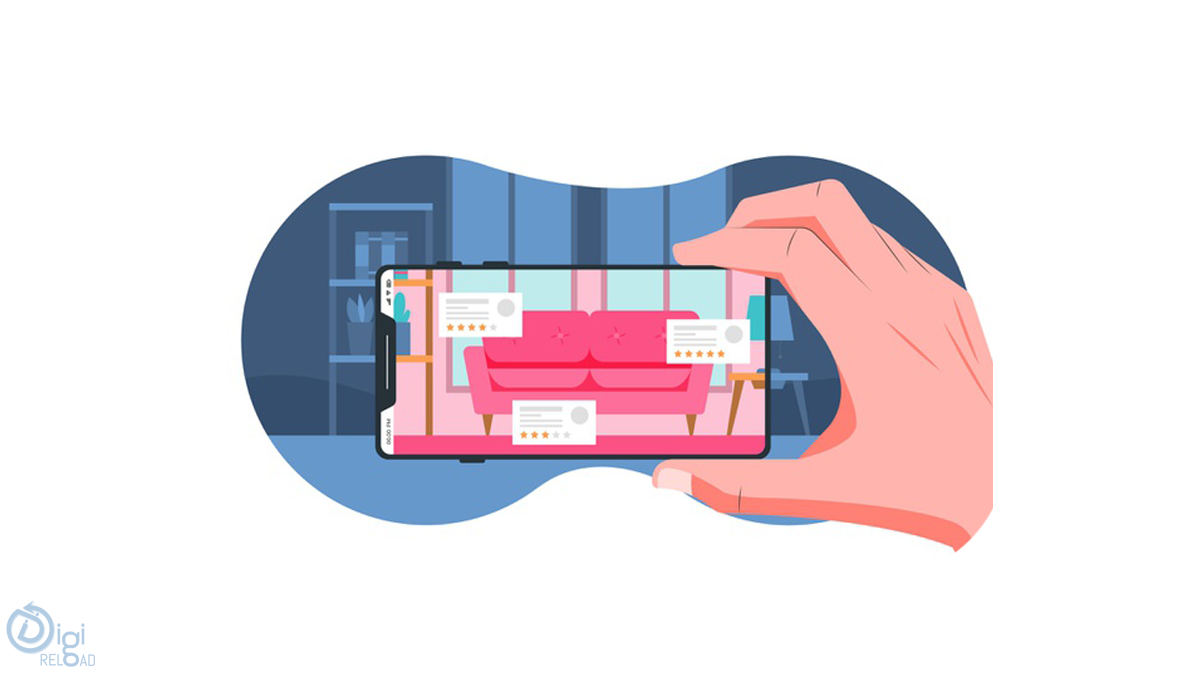In this Virtual Reality vs Augmented Reality blog, we will learn what is Augmented Reality and what is Virtual Reality. We will understand the difference between Augmented Reality and Virtual Reality.
We will also uncover various brand examples of Augmented Reality and examples of Virtual Reality. In the end, we will see the advantages and disadvantages of AR and VR.
What is Augmented Reality
What is Augmented Reality
The term Augmented means to make greater or larger or more intense. Hence Augmented Reality (AR) is a greater version of the real physical world, made more detailed and intense using technology. AR combines the real elements with digital technology to give the users an artificial experience that does not exist in reality.
This is done with the use of digital visual elements, sound, or other sensory stimuli delivered via technology. This technology has been widely used for marketing as well nowadays.
Some popular examples of Augmented Reality are-
- IKEA Mobile App
- Nintendo’s Pokémon Go App
- Google Pixel’s Star Wars Stickers
- L’Oréal Makeup App
- Adidas virtual sneakers
- City Painter by Snapchat
What is Virtual Reality
Virtual Reality (VR), on the other hand, is a life-like experience created using computers. Virtual Reality creates an immersive, believable experience using computer technology and input tracking. It creates a stereoscopic 3D effect with audio, which gives you a more immersive experience than real-life experience.
There are head-mounted devices plus sensory devices like gloves or even joysticks, which you need to put on to dive into the VR experience. It is largely used in 3D movies and video games.
Apart from games and entertainment, Virtual Reality is also used extensively for education and training purposes.
Some popular examples of Virtual Reality are-
- Happy Goggles by McDonald’s
- VR Showroom by Vroom
- Marriott International
- Holoroom by Lowe's
Function
How does Augmented Reality function?
While talking about Augmented Reality, it is mainly designed for free movement. The objective of AR is to make something or add something which is not already present on the scene. It is highly mobile-based.
For example, if you are in the Ikea store and using their AR app, if you point out a product, the app will show you all the available customizations you can do to the targeted product and you can actually see all that happening in your device. You don't have to wear a device or anything to experience Augmented Reality.
How does Virtual Reality function?
On the contrary, VR comes with wearable gears that can easily be mounted on the user's head. But not all Virtual Reality experiences come with audio inbuilt headsets, sometimes the scenes, images, or videos are created in
Virtual Reality technology and users are given 3D glasses to view the elements in VR. This type of VR experience is adopted for movies, training, and educational purposes.
Technology
The technology used in Augmented Reality
- Basic AR overlay works fine with 3DOF.
- Heavier apps need 6DOF to track physical positions
- Stereoscopic Camera
- Advanced Pattern recognition
The technology used in Virtual Reality
- Tethered VR headsets, such as the Index and PS VR
- Standalone VR headsets, such as the Quest 2
- (6DOF) Six-Degrees-of-Freedom motion tracking.
Pros & Cons
Pros
In this section, we will discover the advantages of AR and VR
Advantages of AR-
- Offers individualized learning
- Aids the learning process
- Applicable to vast fields
- Greater scope for innovation and improvement
- More accurate
Advantages of VR-
- The main advantage of VR is that it creates a realistic world for the
- Has revolutionized the education field by making education more easy and interactive.
- Users can experiment with an artificial environment.
- Immersive learning
Cons
In this section, we will discover the disadvantages of AR and VR
Disadvantages of AR-
- It is very expensive
- Lacks privacy
- AR devices can sometimes not perform up to the mark
- Can cause mental health issues
Disadvantages of VR-
- VR is becoming much more common
- Can be addictive as people will spend more time in the virtual world
- May result in physical impairments, hearing, and vision especially
















.png)